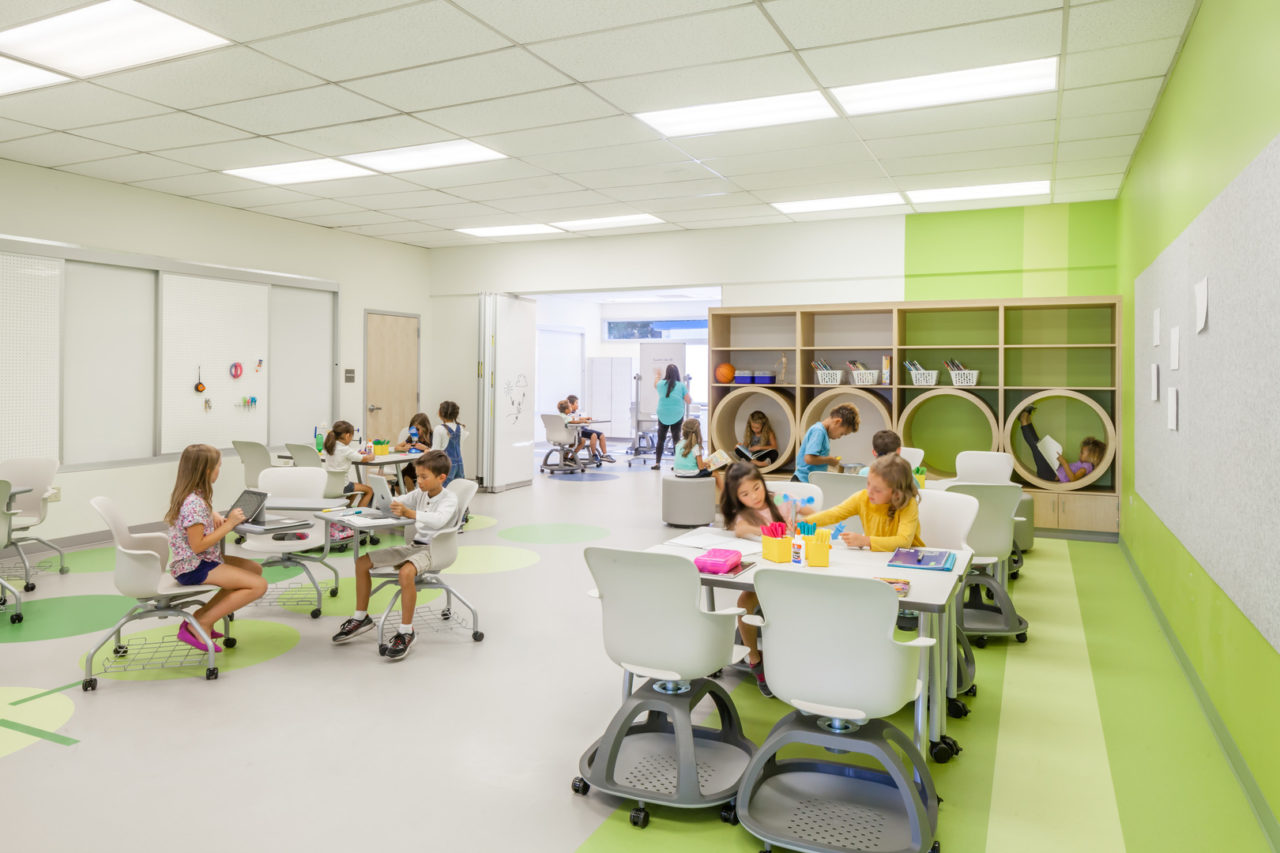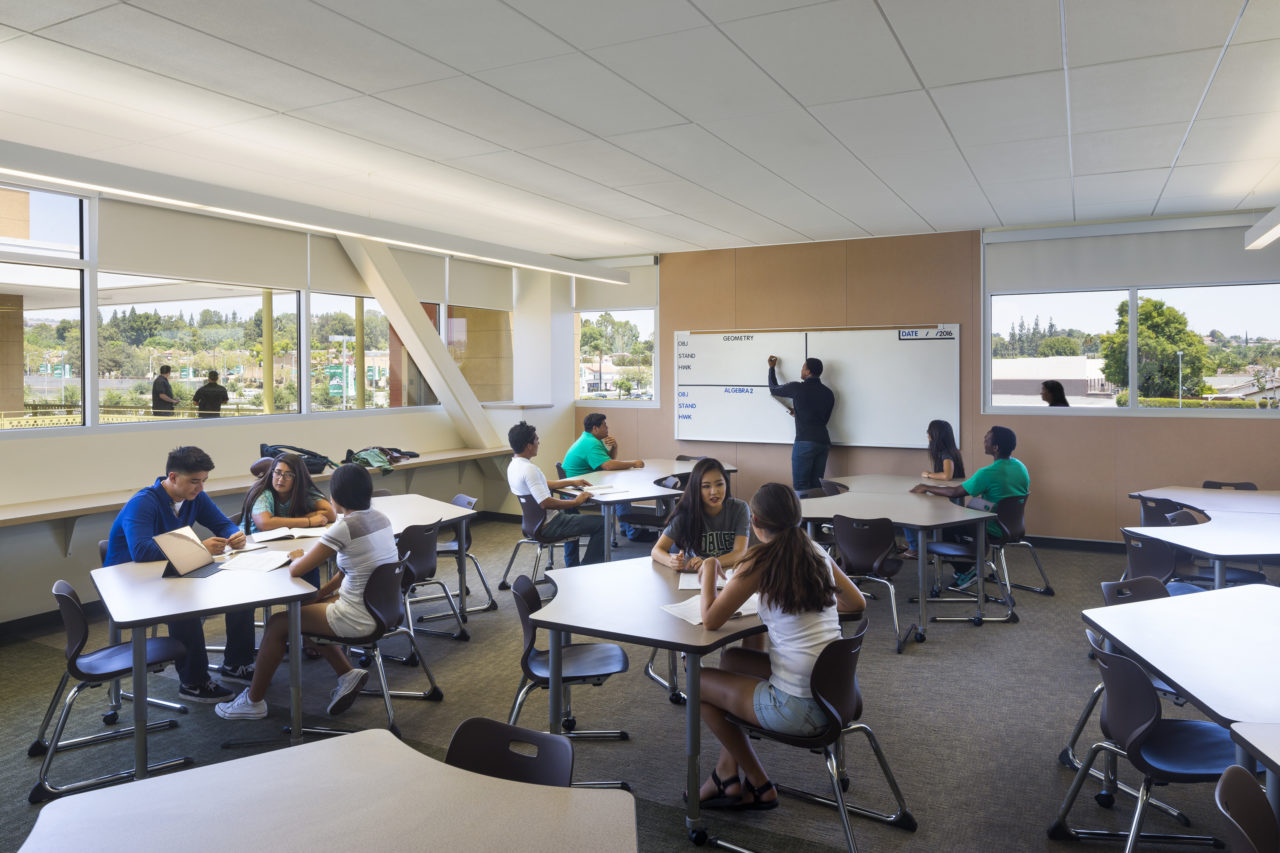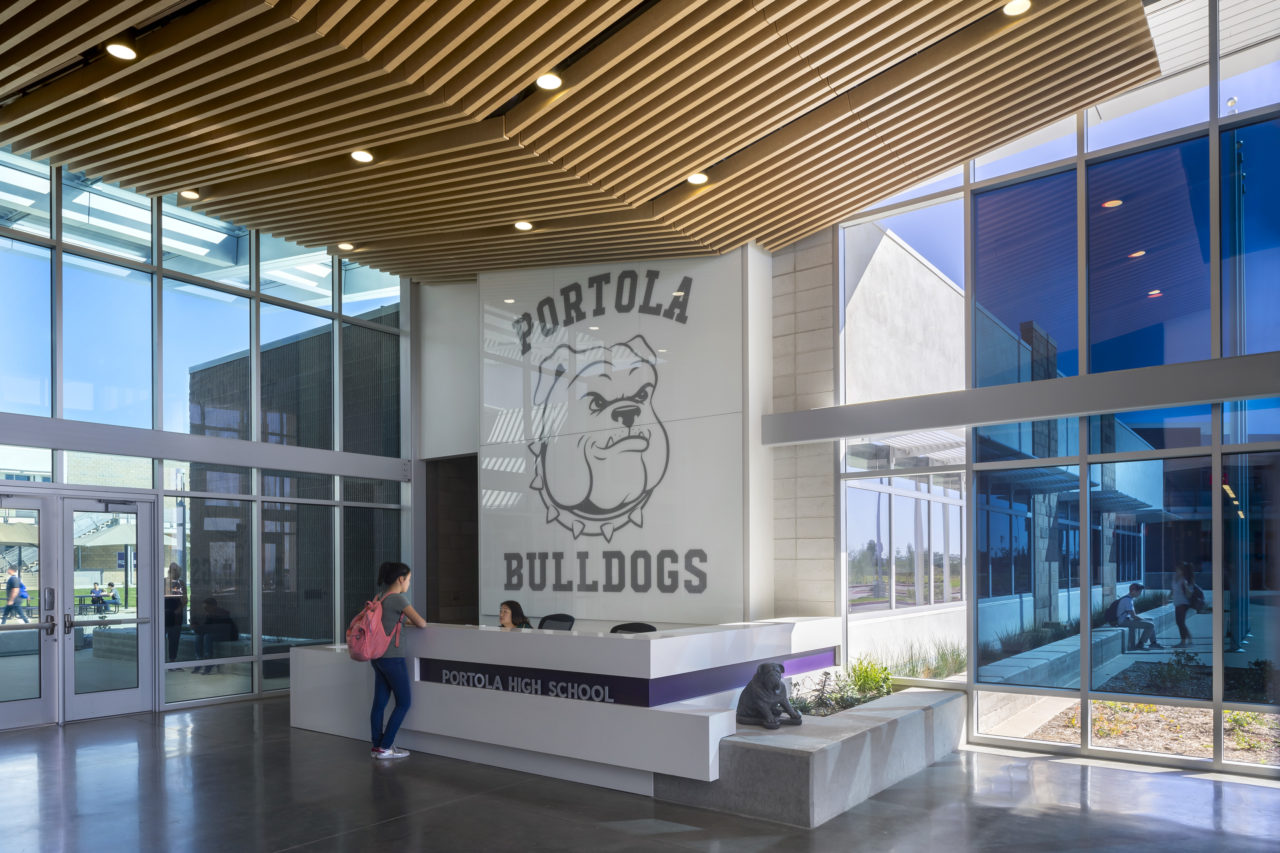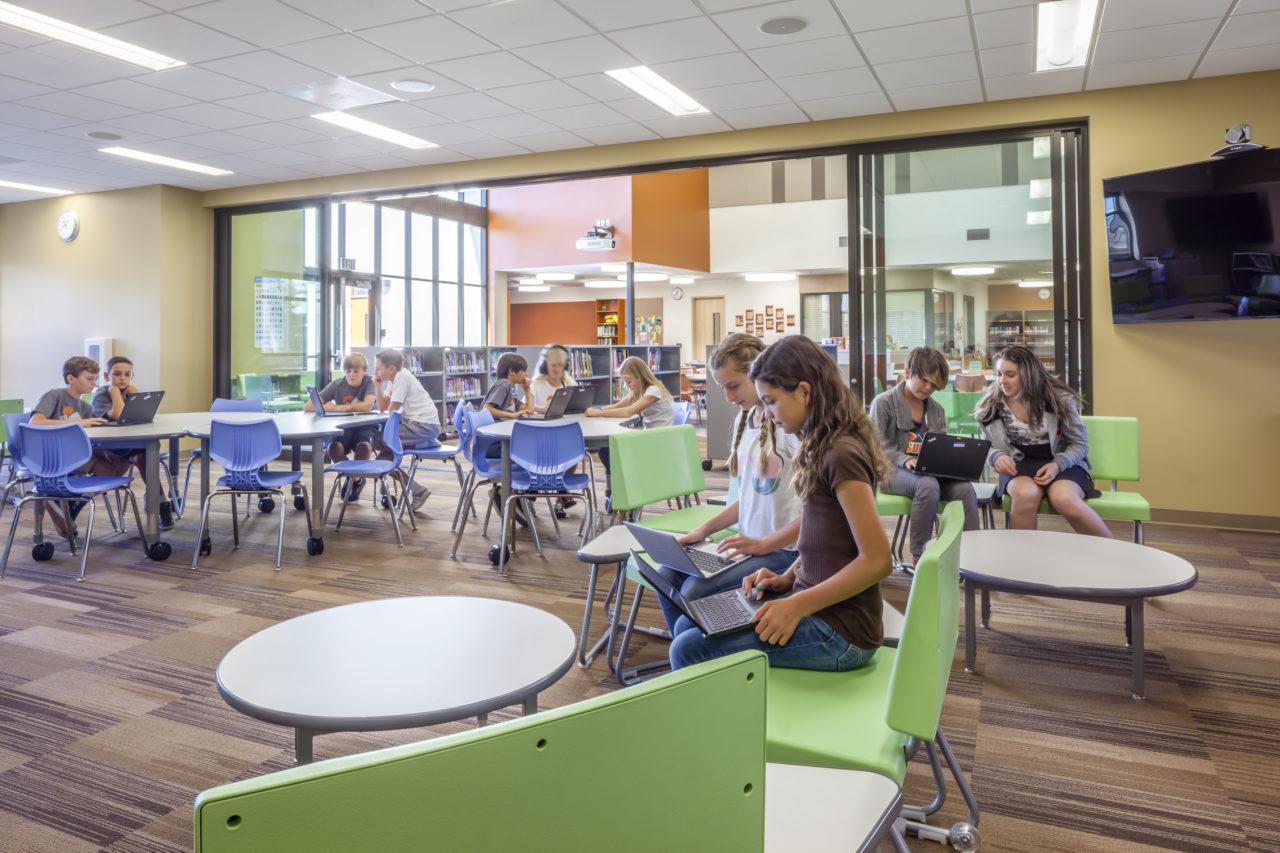School renovations are a high priority in many districts around the country. That’s because today’s schools must address a growing number of student needs and educational opportunities. However, most schools still aren’t equipped to do this with the best outcomes. The existing interior design is often outdated and unable to support new teaching methods. Many facilities are inefficient and do not enable student engagement.
By renovating schools using creative and intelligent concepts of interior design, architects set students up for greater success. Architects use furniture, lighting, acoustics, and technology to significantly improve the function of the classroom. When the interior design direction is on target, you’ll maximize your renovation budget and create teaching and learning environments that students and teachers will love.
Professional Interior Design Renovation Matters in Schools
Interior Architectural design plays an important role in many aspects of student learning. From the chairs students sit on to the colors on the walls, design choices have the ability to support an active learning environment. These design elements subtly reinforce a district’s commitment toward student success.
What story do you want to tell? Do you want your students to feel engaged and welcome as well as your teachers to feel supported? By implementing creative concepts of interior design, you are fostering these emotions.
Many school administrators and facility staff lack the interior design expertise and experience to make the best design choices.
An architecture firm with facility renovation experience can help. Architects do more than just design and construct new buildings. Many firms also renovate buildings, creating interior design concepts that foster student learning. They do this by:
- Adding flexible and ergonomic furniture
- Using graphics and color to reinforce community and engage students
- Improving lighting and acoustics to support various educational functions
- Incorporating modern technology in the classroom
By incorporating these interior design elements, you’ll significantly improve not only the look of the school but also how students and teachers feel when they walk onto the campus.
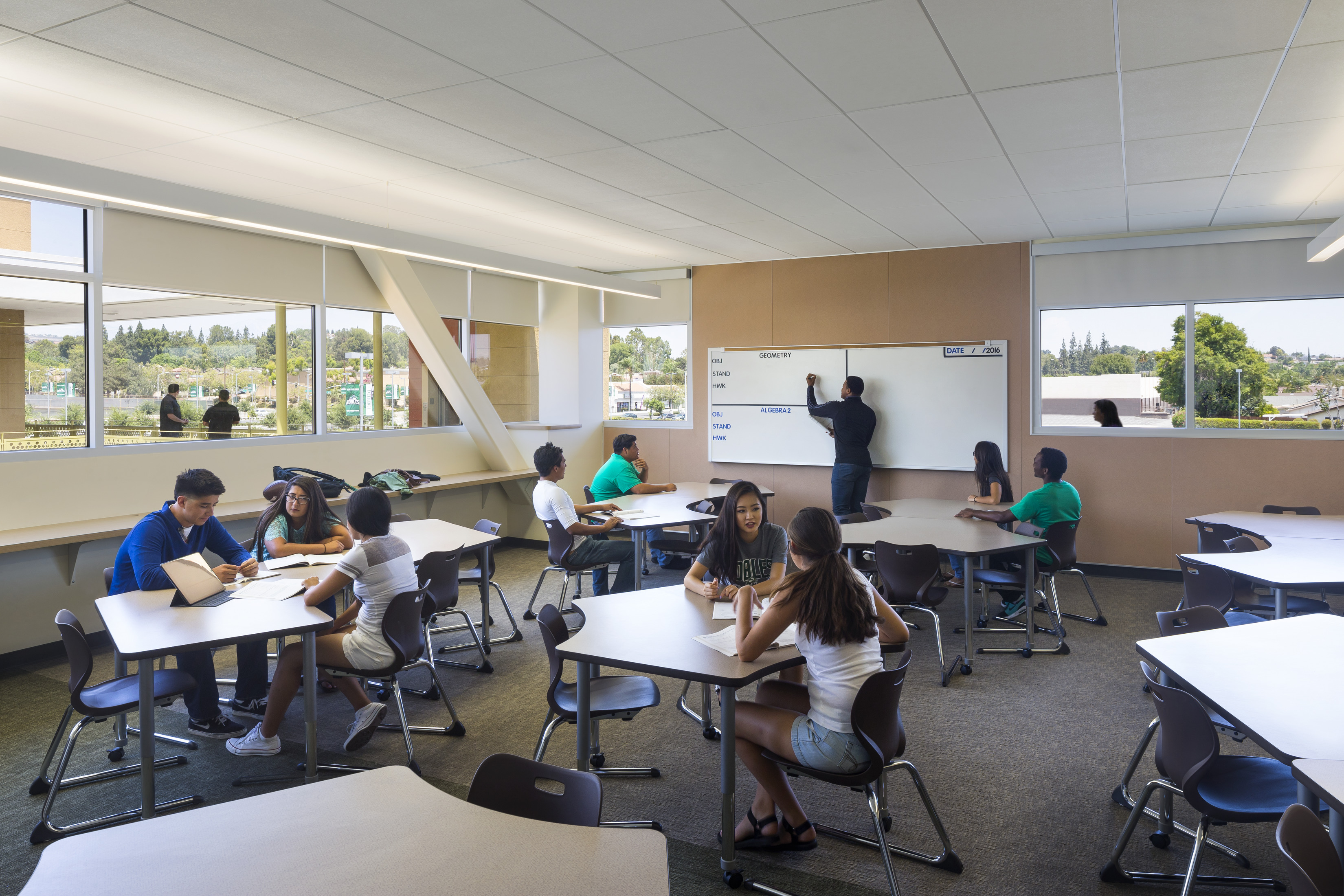 Flexible Furniture Keeps Students Engaged
Flexible Furniture Keeps Students Engaged
If your renovation budget is challenged, you might consider investing in new, flexible furniture. Classroom furnishing influence how students learn and interact with their peers and their teacher.
Traditional front-facing desks and chairs may be appropriate in a lecture hall, where students are expected to sit and listen to the teacher at the front of the room. However, if you want students to participate more in the classroom, this static type of furniture can hinder these efforts.
To get students engaged, architecture firms suggest replacing traditional desks and chairs with modular options that are much easier to reconfigure throughout the day. Some great options are:
- Tables and chairs with casters that facilitate break-out groups as well as individual learning
- Comfortable furniture in places where students socialize, relax, or read
- Trapezoid-shaped tables that offer students a variety of configurations
- Adjustable height chairs that can be used at a variety of countertop heights
At Washington Elementary School in Sacramento, California HMC Architects left the existing building structure untouched but completely transformed the classrooms using flexible furniture. As a result, students were more engaged within their learning environment.
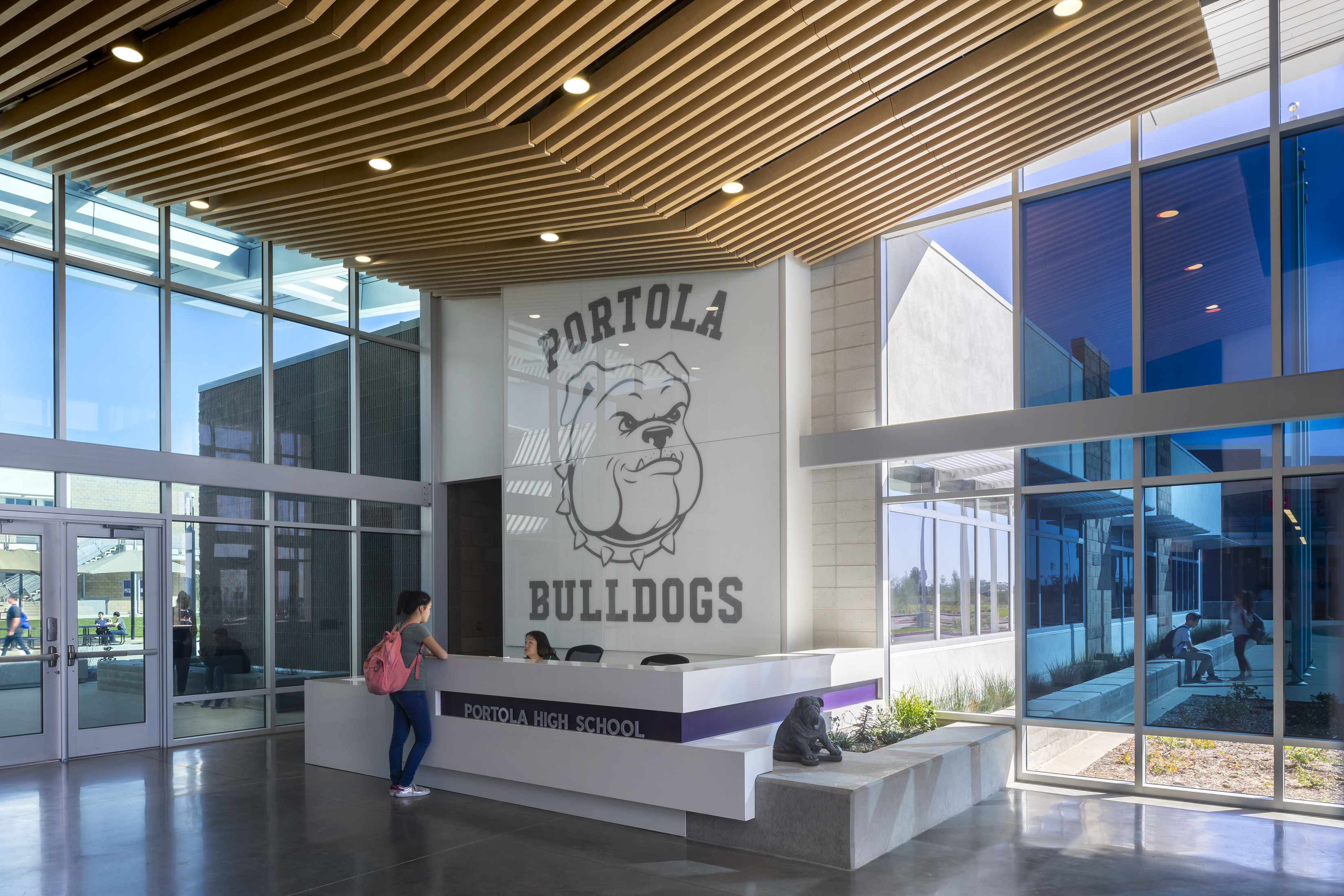 Environmental Graphics Instill a Sense of School Pride
Environmental Graphics Instill a Sense of School Pride
One of the many creative concepts interior designers use to enhance space is the incorporation of Environmental Graphics. Graphic artwork and signage can reinforce a sense of place and community pride and assists in intuitive wayfinding.
Creative use of color, student art, and murals that reinforce positive messaging helps schools feel more community-driven and encourage students to think creatively. Some of the most impactful solutions incorporate:
- An allowance for places to feature student artwork that showcase student accomplishments.
- Murals of important community members or iconic city landmarks connect the school to the surrounding neighborhood and invoke community pride.
- Environmental Graphics with positive messaging that reinforce uplifting thoughts and behaviors
- Integration of the school mascot and alma mater to encourage school pride.
While some of these improvements are more costly than others, the outcomes can have a significant impact on student behavior and engagement.
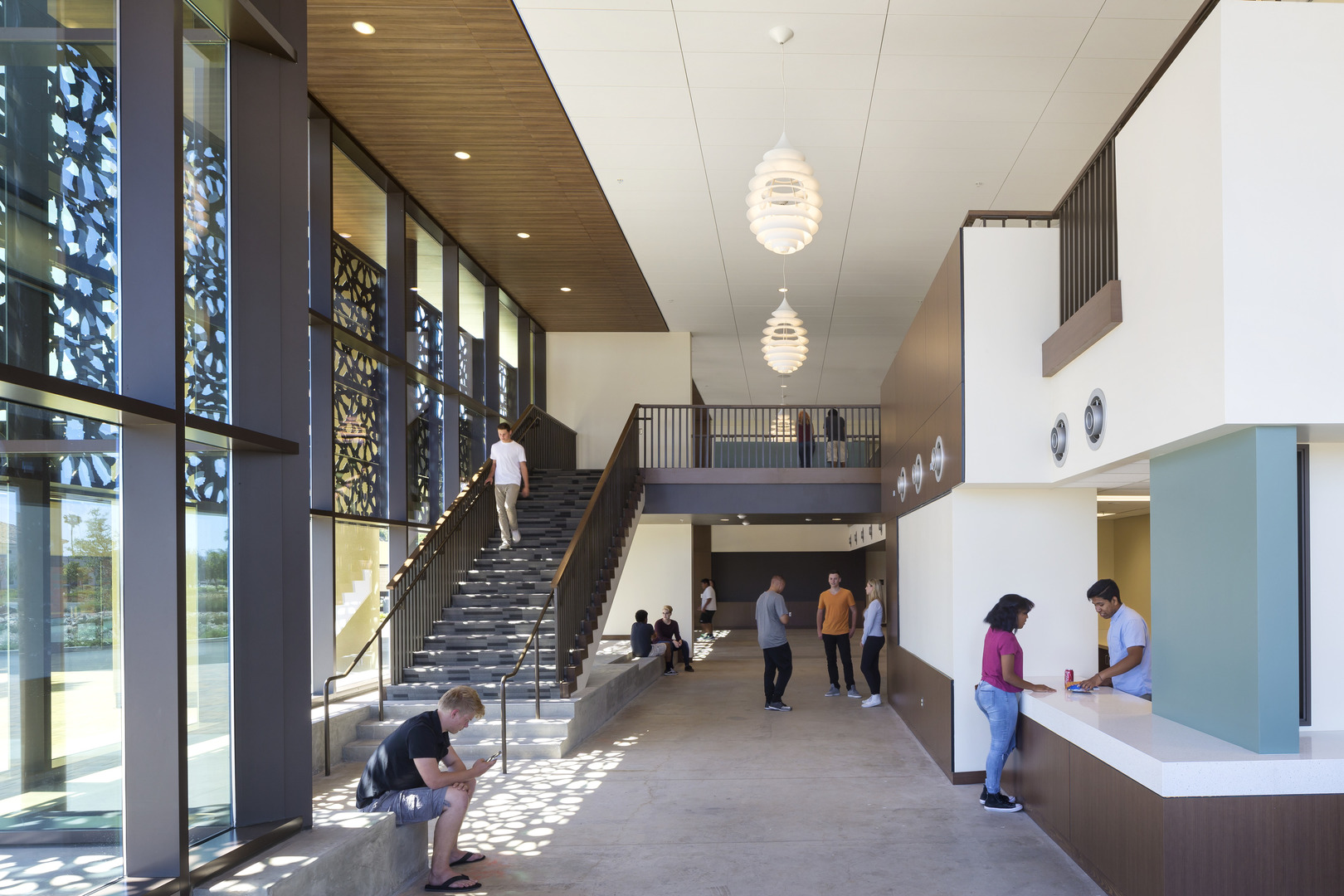 Enhancing Environments with Lighting and Acoustics
Enhancing Environments with Lighting and Acoustics
A couple of important tools architects use to craft environmental design are lighting and acoustics. Although most people take these for granted, when lighting and acoustical design is an afterthought, the space suffers. When considered, the appropriate incorporation of thoughtful lighting and acoustical design can most certainly enhance the space’s performance.
While architects are mindful of visual aesthetics, they also must consider the effectiveness of lighting and acoustical design for each specific space. Some of the details they focus on include:
- Lighting that dims or brightens according to natural light cycles
- The appropriate tone of light that best supports the function of the space.
- Variable lighting levels that teachers can adjust based on student activities.
- Strategic removal of natural light barriers
- Acoustic ceiling baffles.
- Acoustic ceilings with high NRC levels.
- Tectum or acoustic panels adhered to walls.
By incorporating intelligent lighting and acoustic design, architects can enhance the performance of the teaching and learning environment.
 How to Utilize Creative Interior Design Concepts to Enhance School Renovations.
How to Utilize Creative Interior Design Concepts to Enhance School Renovations.
Architecture firms with renovation experience have the experience necessary to incorporate these creative concepts of interior improvements in schools around the country. Architects provide a clear direction within a unified concept that ties the campus together throughout every space. They also focus on the design solutions that serve a purpose and facilitate improved student learning. An experienced t interior designer understands how to utilize the project budget in ways that have the biggest impact on environmental performance. Utilizing taxpayer funds in the most effective way, architects understand how to best use each dollar to its greater good.
